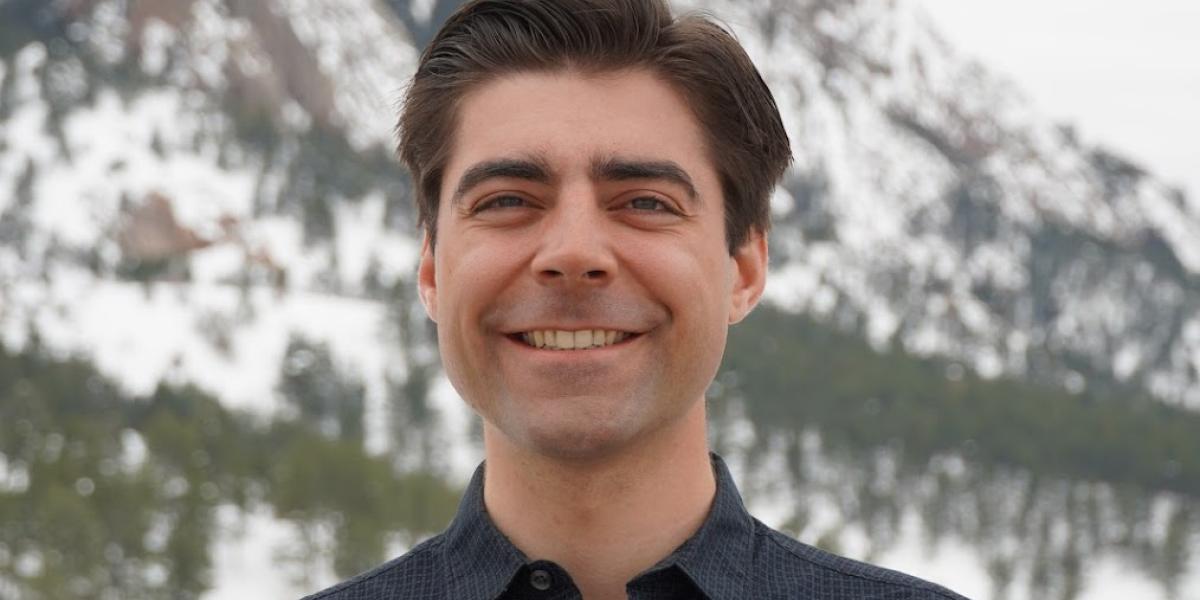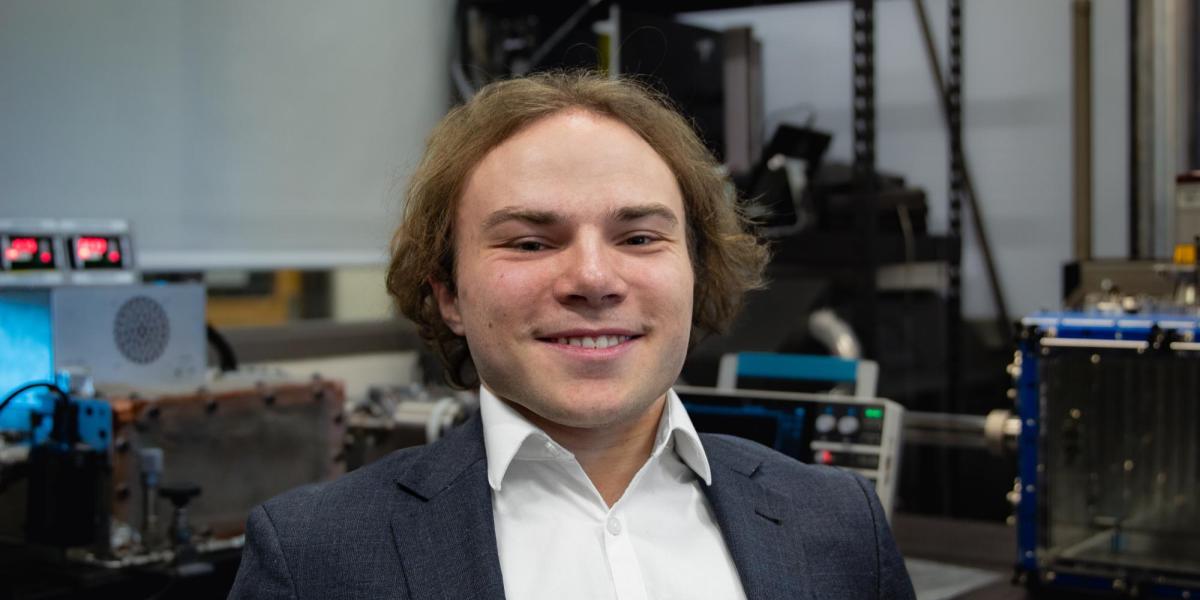Five PhD students earn 2024 NASA fellowships
Five PhD students in the Ann and H.J. Smead Department of Aerospace Engineering Sciences are being recognized with 2024 NASA Space Technology Graduate Research Opportunities (NSTGRO) fellowships.
The annual program sponsors graduate students who show significant potential to contribute to NASA’s goal of creating innovative new space technologies for our nation’s science, exploration and economic future.
Program recipients perform space technology research at their university campuses and at NASA Centers.
NSTGRO honorees receive research funding and are matched with a technically relevant NASA subject matter expert, who serves as a research collaborator.
Smead Aerospace students have had strong representation in this program, with 25 winners over the past five years.
Read below for more information about each 2024 honoree and their research.

Kristen Ahner
2nd Year PhD Student
Advisors:Daniel Scheeres and Jay McMahon
Labs: Celestial Spaceflight Mechanics Lab (CSML) and the Orbital Research Cluster for Celestial Applications (ORCCA) Laboratory
My research focuses on high-fidelity uncertainty propagation techniques and their incorporation into robust spacecraft guidance to enable autonomous mission execution for space exploration. As complex dynamics cause errors to grow over time and drive a spacecraft to deviate from its orbit and planned maneuvers, corrective guidance algorithms must adaptively re-optimize the spacecraft thrust maneuvers to reach target states and achieve mission goals, such as precise science observations or strict orbit accuracy. I aim to advance the state of the art by combining stochastic control approaches to uncertainty with nonlinear chance constraints in the cislunar region and planetary exploration environments.

Vicki Hurd
3rd Year PhD Student
Advisor:Allie Hayman
Lab:Bioastronautics Lab
This research will develop venous gas emboli (VGE) detection algorithms and characterize the impact of signal degradation and motion artifacts on detector performance to establish the foundation for a wearable ultrasound extravehicular activity (EVA) VGE monitor. It is currently unknown how VGE form over time and relate to the onset of decompression sickness. Recent advances in ultrasound transducers could enable long-term, continuous monitoring, transforming our understanding of decompression sickness and providing a means to monitor astronaut VGE levels during EVA. This will be critical as future exploration missions emphasize increased EVA frequency, duration, and number of transitions between pressurized environments. I will develop and validate sound-based and image-based ultrasound VGE detection algorithms and generate novel performance metrics for each, establish algorithmic means of synthesizing decompression sickness data, characterize algorithm performance under degraded signal conditions, and assess how motion artifacts influence VGE detection abilities. Autonomous detection of VGE levels in the circulatory system via wearable ultrasound would prove monumental in the foundational understanding of decompression sickness and would serve as a direct strategy to predict and mitigate decompression sickness during surface EVA.
Hurd is a 2024 awardee of both the NSTGRO and the Department of Defense National Defense Science and Engineering Graduate Fellowship. Program rules allow honorees to receive only one. She has chosen the NSTGRO.

Max Joyner
2nd Year PhD Student
Advisor:Natasha Bosanac
Lab: Bosanac Group
While orbital rendezvous between spacecraft in low Earth orbit (LEO) has become routine, the sensitive and chaotic gravitational dynamics of multi-body environments present additional challenges that need to be addressed for more ambitious exploration missions such as NASA's Artemis program. My research aims to help bridge this gap through developing a new approach for rapidly designing safe spacecraft trajectories for far-range approach and then close-range rendezvous in a multi-body system using motion primitives. This process will involve constructing two libraries of motion primitives for each domain, assessing them using a safety metric adapted from heritage LEO indices, building a hybrid motion primitive graph to construct initial guesses, and refining these guesses through a corrections problem to produce safe and efficient rendezvous trajectories.
Joyner is a 2024 awardee of both the NSTGRO and the Department of Defense National Defense Science and Engineering Graduate Fellowship. Program rules allow honorees to receive only one. He has chosen the NSTGRO.

Andrew Morell
3rd Year PhD Student
Advisor:Hanspeter Schaub
Lab: Autonomous Vehicle Systems (AVS) Laboratory
Andrew’s research aims to (quite literally) close the gap between what we know about spacecraft dynamics before and after their docking, focusing on spacecraft contact dynamics for in-space servicing, assembly, and manufacturing (ISAM). Andrew is studying the use of impulse-based dynamics to create a generalized contact dynamics model for spacecraft using the Basilisk Simulation Framework. Currently, grappling in space relies on overengineered hardware to succeed in physically capturing another vehicle, but a full understanding of the contact dynamics can enable future sample return, on-orbit refueling, assembly of large space structures, and more by enabling advanced guidance algorithms for docking.

Tomaz Remec
3rd Year PhD Student
Advisor:Hisham Ali
Lab: Magnetoaerodynamics and Aerospace Plasmas Laboratory
The objective of Tomaz’s research is to provide foundational experimental data on the behavior of high-speed plasma flows such as those generated during planetary entry in the presence of applied magnetic fields and the characterization of resultant forces with the goal of advancing low TRL technologies to enable more capable, cost-effective planetary exploration missions. The extreme aerothermal environment experienced during hypersonic flight creates the conditions for significant dissociation and ionization of atmospheric gases. These ions and free electrons then constitute a conductive fluid which, when in the presence of a magnetic field, will admit a current and produce an associated magnetic field due to the Lorentz force. Leveraging of these magnetohydrodynamic interactions by novel technologies could expand capabilities of current thermal protection schemes, however, reliable experimental data on said interactions in planetary entry relevant plasma flows is extremely limited. This research will provide high quality, well-validated results utilizing several new inductively coupled plasma tunnel facilities in the Magnetoaerodynamics and Aerospace Plasmas Laboratory, and the results will enhance our understanding of magnetohydrodynamic interactions in hypersonic plasma flows and will directly contribute to the development of innovative technologies that will augment the performance capabilities of scientific missions to other worlds.

